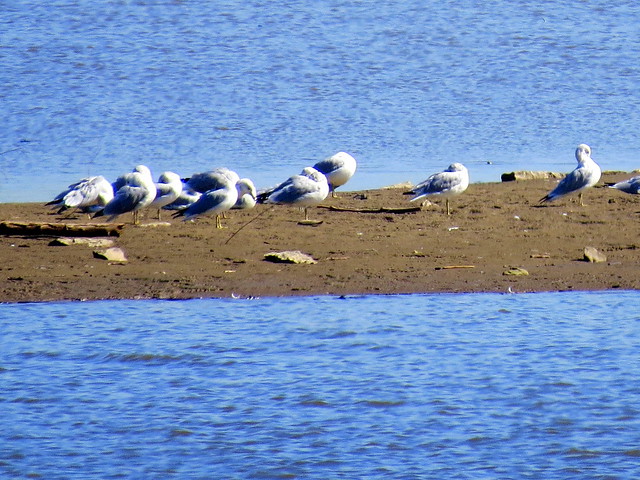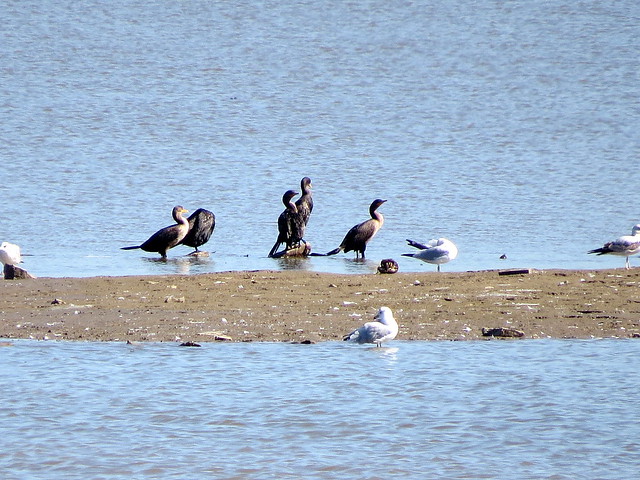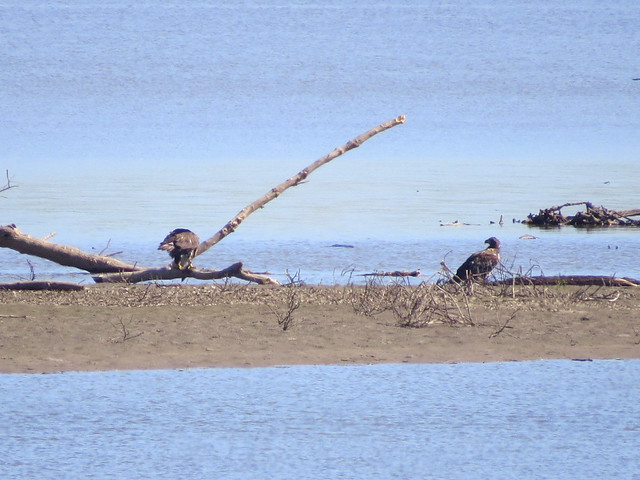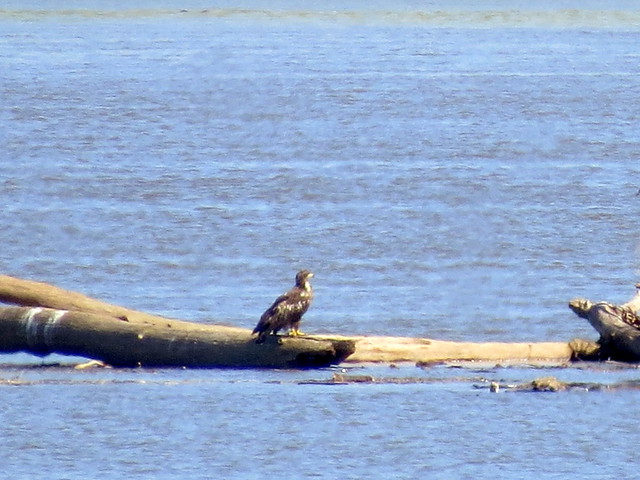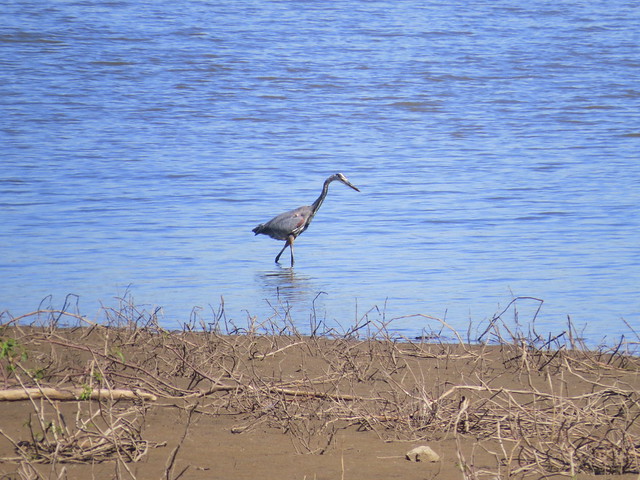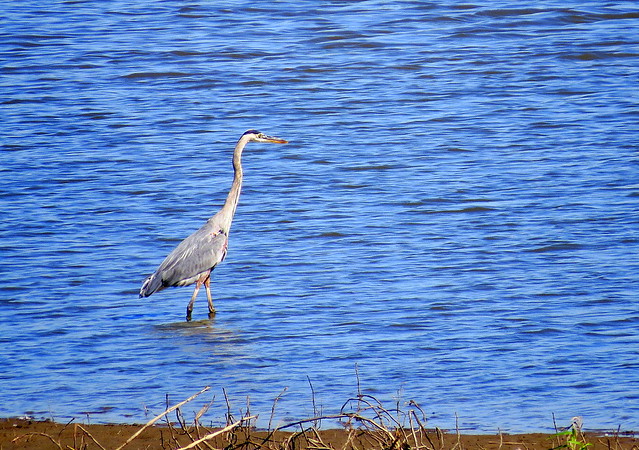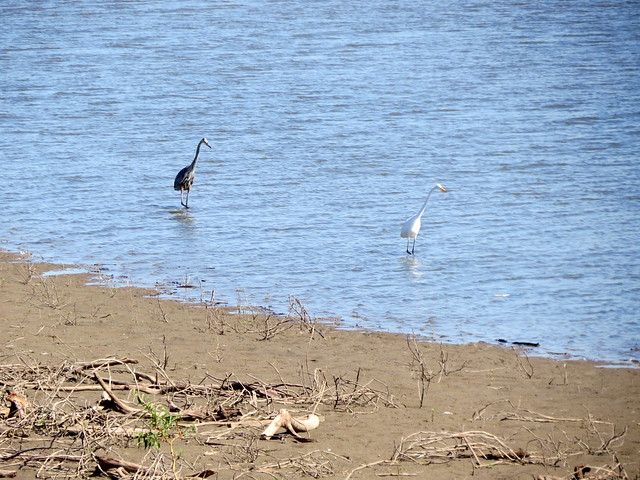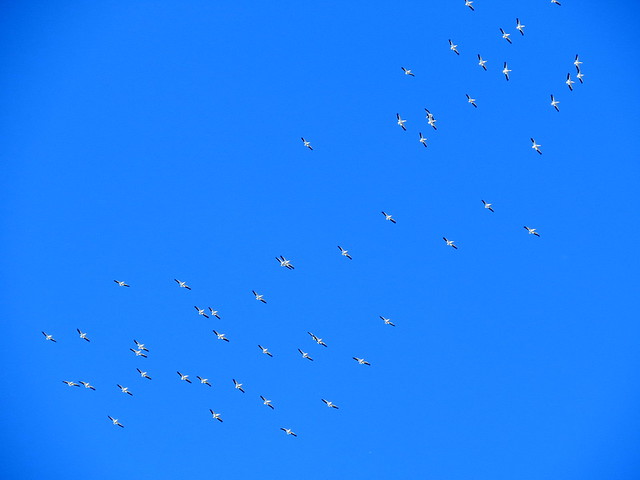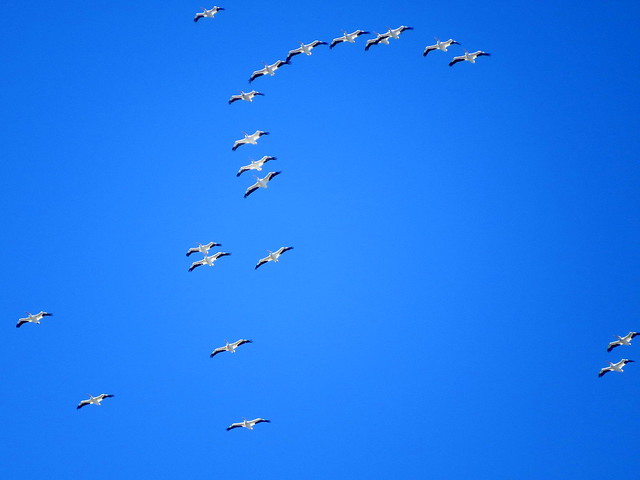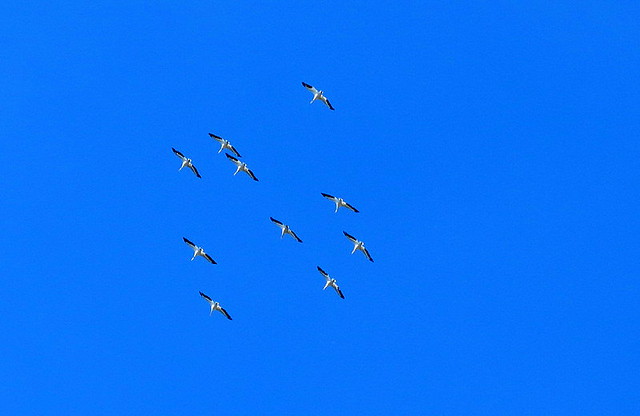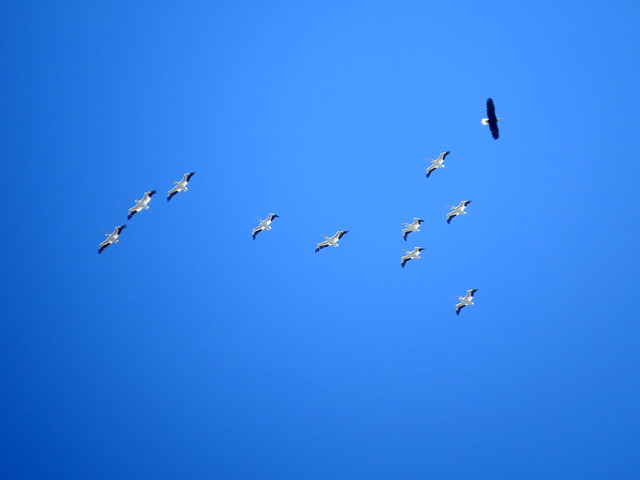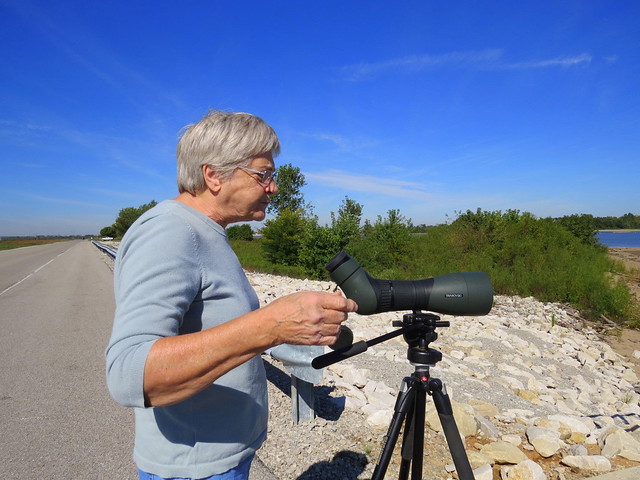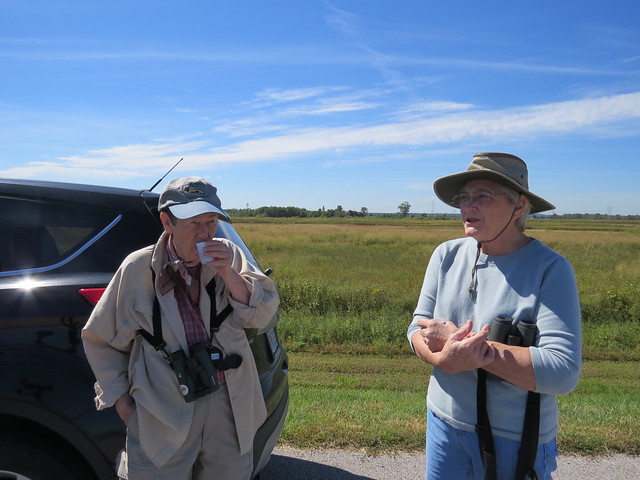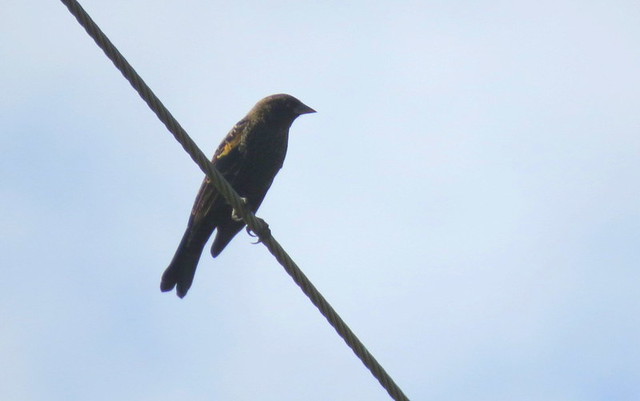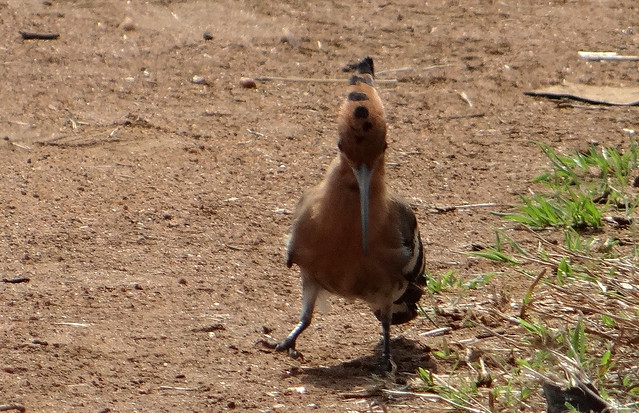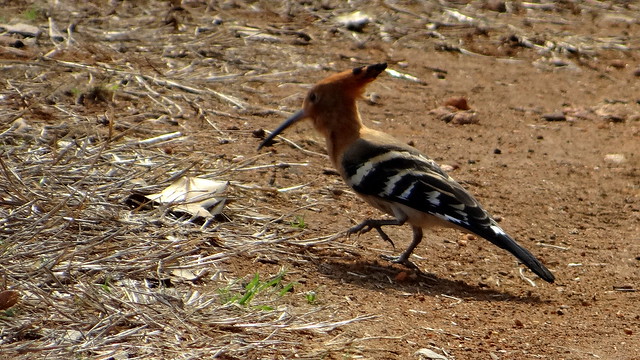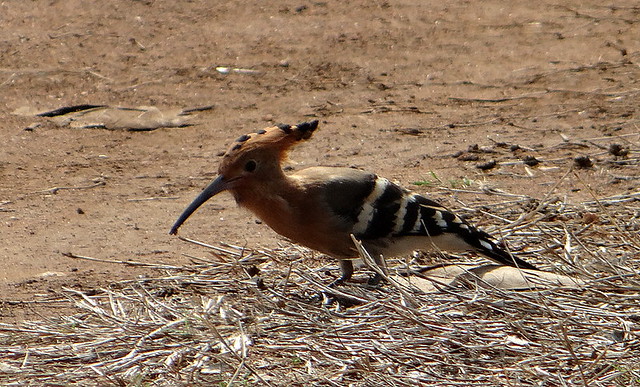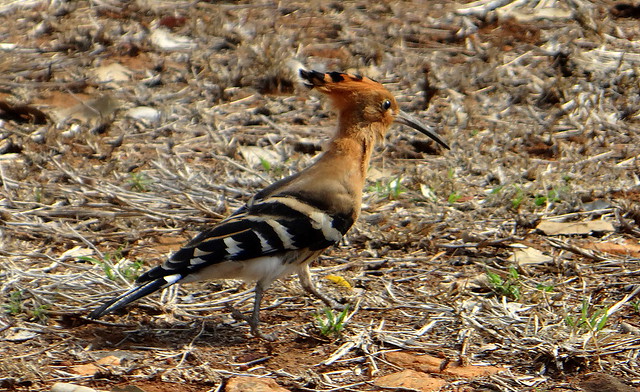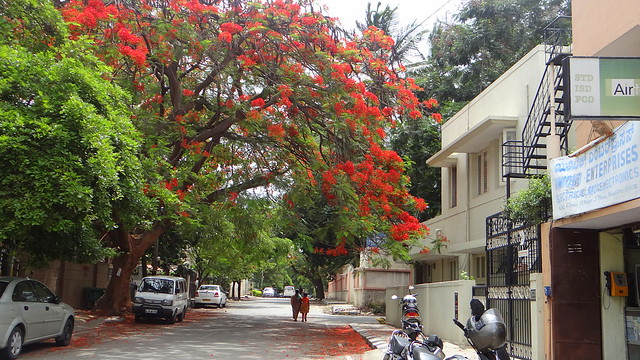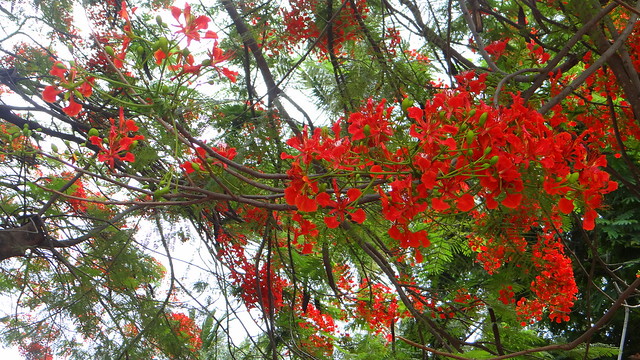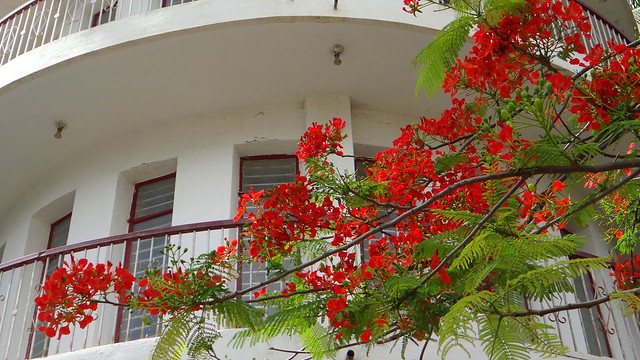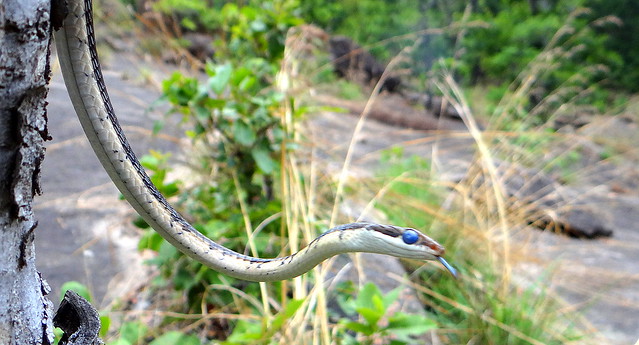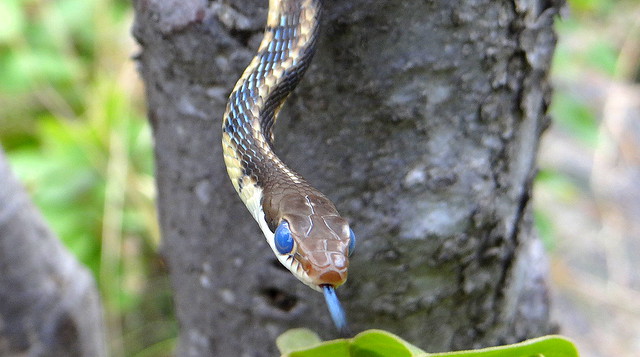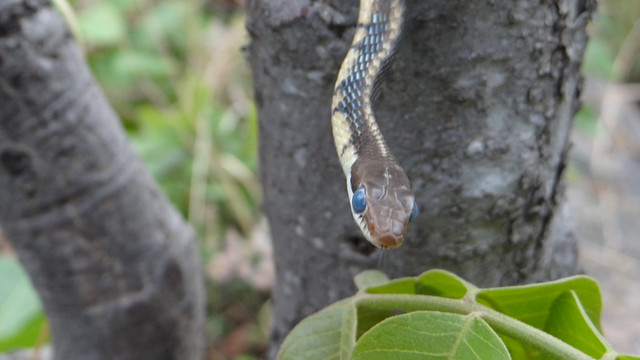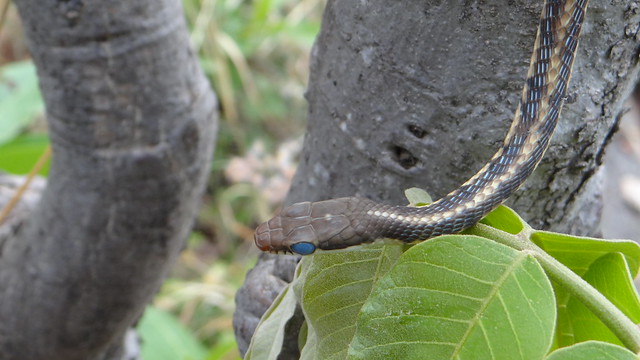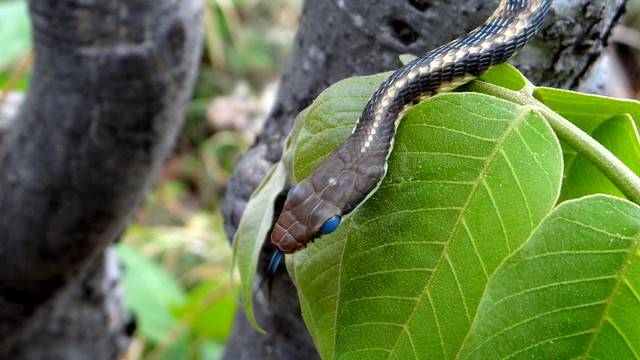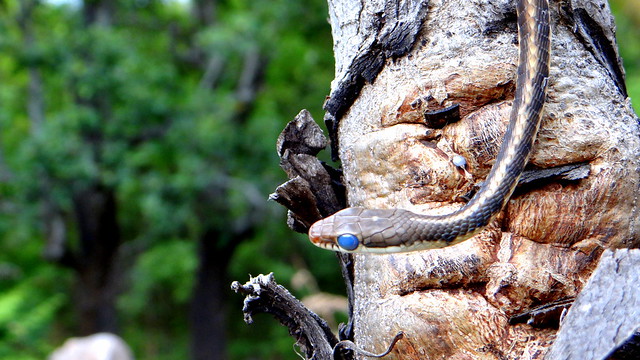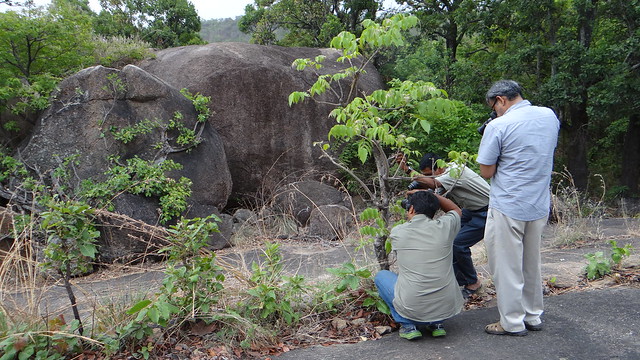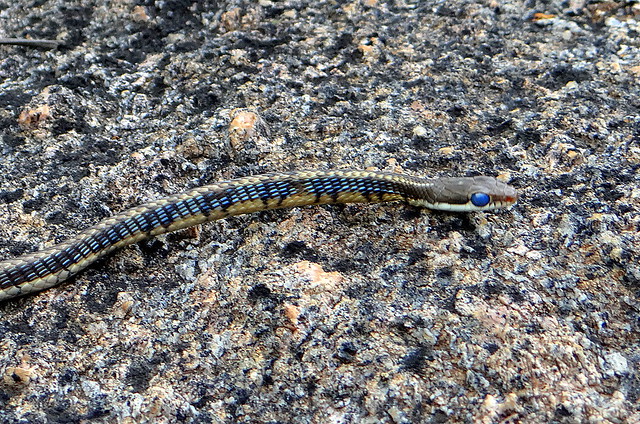Email to the bngbirds egroup:
I suppose by now everyone who went for the first Sunday outing to Hebbal would have come back, digested breakfast and settled down to the rest of the day…meanwhile, Garima, Jahnvi,Niket, Pradnya, and I went to Valley School to see what the morning would yield.
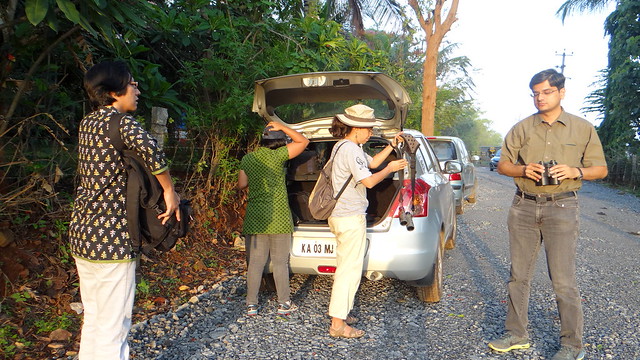
Summer colours on the ground:

In the trees:
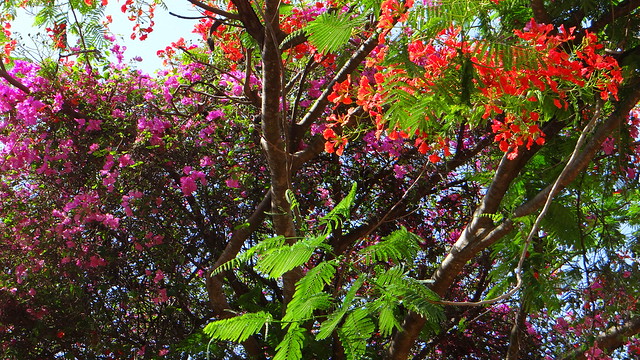
It turned to be a very enjoyable morning..and Valley School always shows us something unexpected. This seemed to be a morning of children! We saw a Jungle Babbler mother literally “spreading her wings” over her baby, as she also preened her baby.
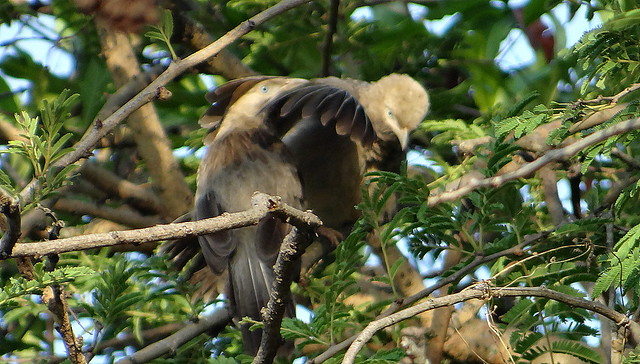
We saw many juvenile Small Green Bee-eaters. whose plumage lacked the bright sheen of the adults, or the distinctive tail. Coppersmith Barbet “children”, too, were everywhere; the crimson patch on their foreheads not developed yet.
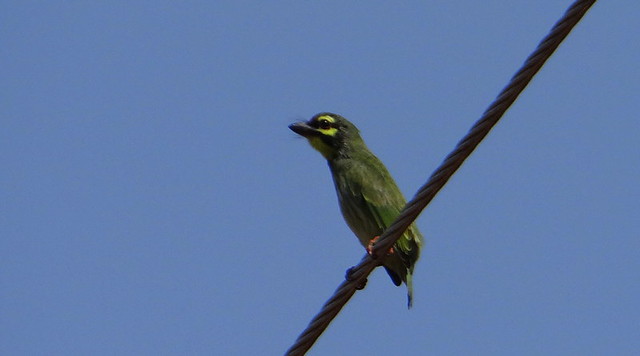
White-browed Bulbuls
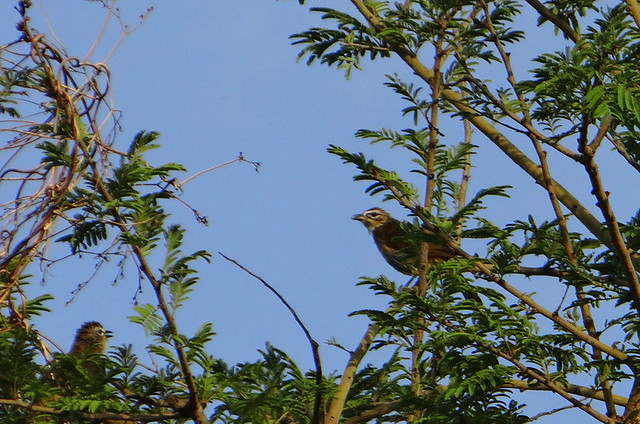
and Red-whiskered Bulbuls, too, seemed to be flying about with their young ones. We watched several Flamebacks.
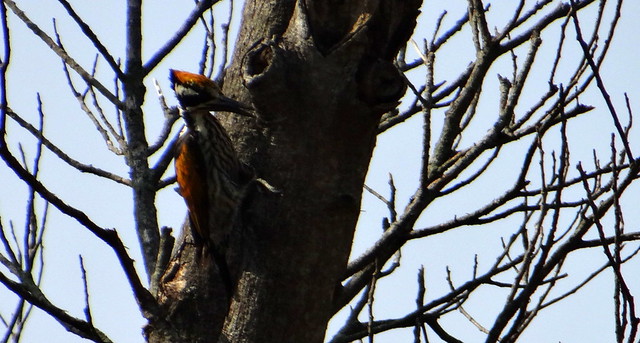
Birders at the Banyan tree near the sheds:
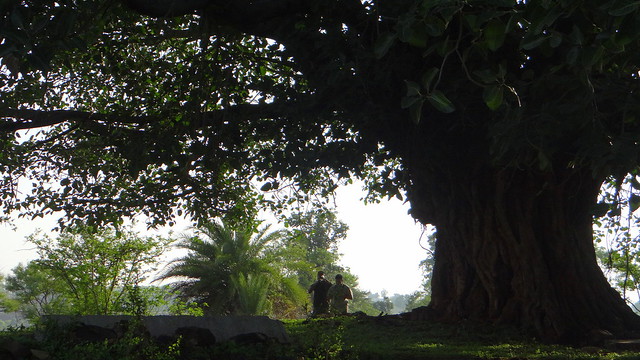
Spotted Owlet in the Banyan tree:
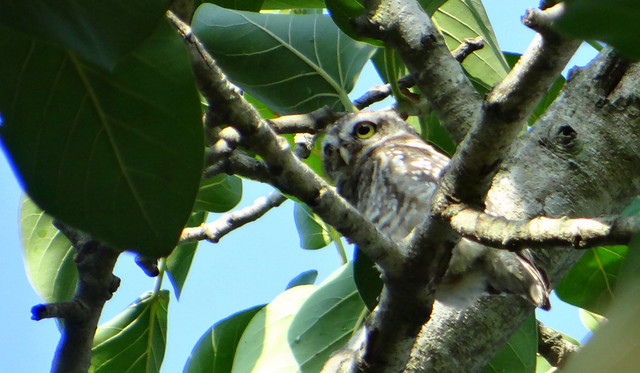
Young White-cheeked Barbets:
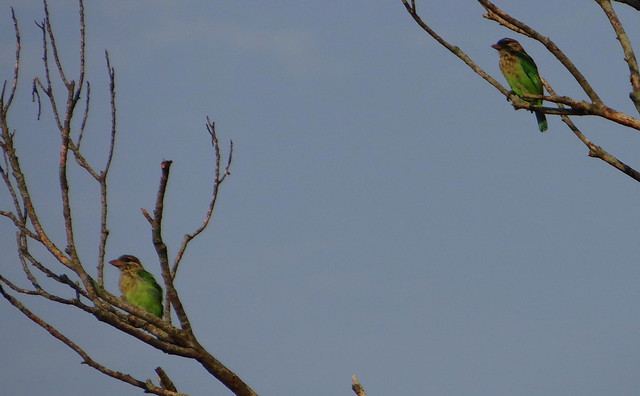
The children were not only of the bird species. A few showers have had a magical effect on the landscape in the Valley School area; greenery is bursting forth everywhere, as fresh shoots push their way up through the wet. fecund soil.
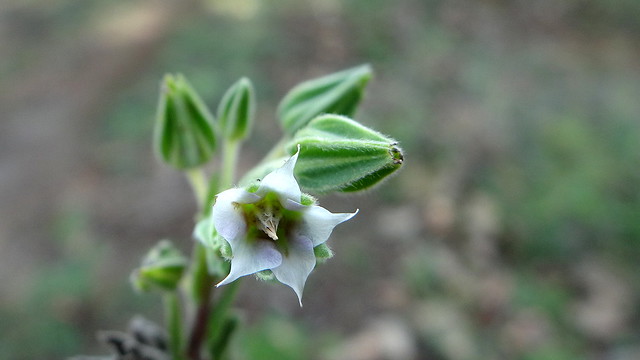
A couple of caterpillars reminded me that babies come in all shapes and sizes. I will be asking for id’s for these; but their beauty by any other name would remain as beautiful.
Here’s one, on a blade of grass:
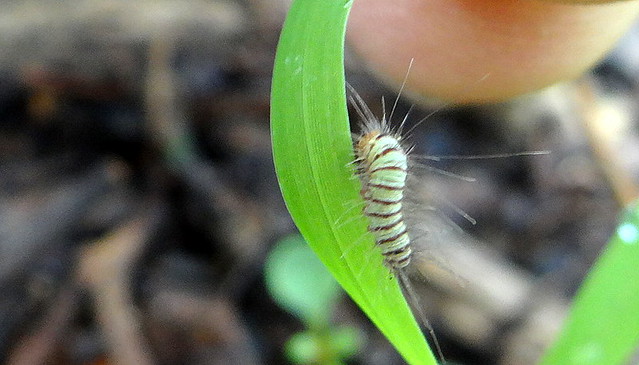
Here’s another, on the Calatropis (Milkweed) plant:
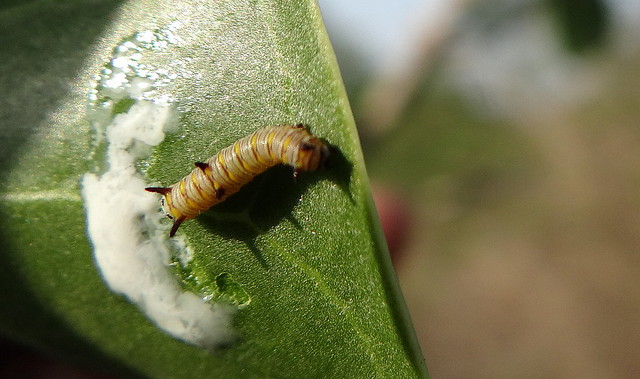
I was also fortunate enough to meet Thomas Job and Ajit Ampalakkad…

the latter immediately showed me the Indian Lavender plant,

and proceeded through the morning, to edify me on matters botanical.
Hog-Plum tree:
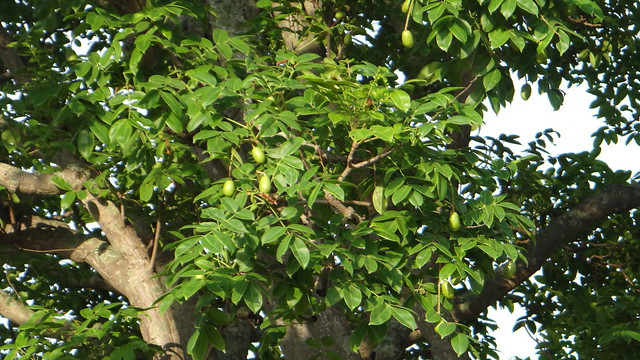
I renewed my acquaintance with several trees and plants, and “shook hands” with a few more.
Loranthus (epiphyte), aka Mistletoe:
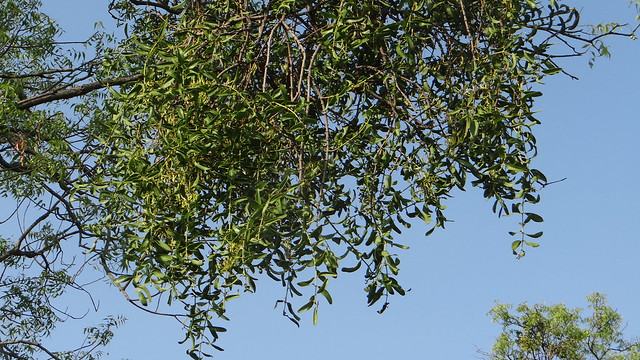
There was, indeed, one seed, round and a light mauve in colour, dispersed around one area; that we could not source the parent tree of,or id.
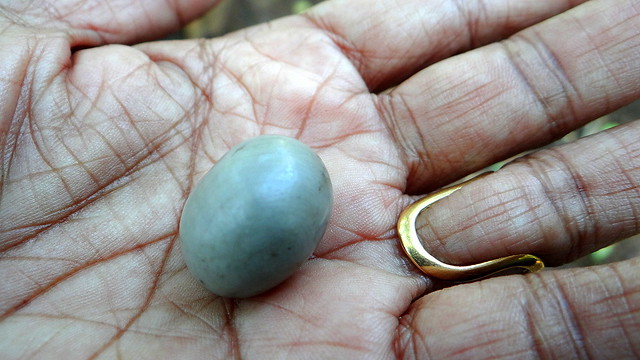
Grasshopper with a spider sitting on its head:

Plain Tiger:
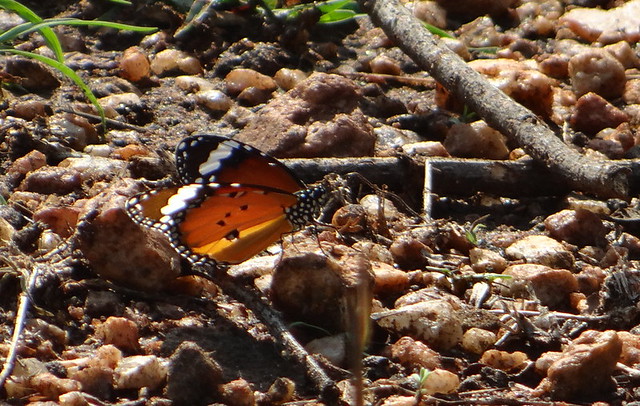
Common Gull:
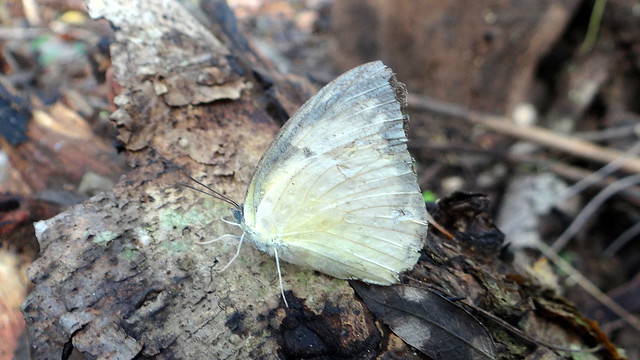
Young saplings of Flame of the Forest (Butea monosperma) seem to be coming up in large numbers. This made me dream of the day when, festooned in flame-coloured blooms, these young trees will attract a lot of birds (though Ajit tells me that only one or two species pollinate the tree!). To dream of a Nature Future is lovely, especially when all the land nearby is getting flattened….perhaps for “Prakriti View Layout”s, or perhaps, as Niket said, a temple is going to come up. The green saplings give hope in an atmosphere of pessimism!
I watched several “ant rivers” pouring along the path as their nests must have got submerged…they were busy carrying larvae along. I watched, fascinated, as two Ant-mimicking Spiders fought each other fiercely; the contest ended abruptly, and they went their separate ways.

A Solitary Hunter Wasp flew along…where would she make her nest and stun her prey,storing it in the nest and laying her eggs on it, so that the newly-hatched children would have fresh food to eat? We just prevented ourselves from walking into a web with a very tiny spider in it…the home was ready, the next step was procreation!
I enjoyed watching the camouflage of the Malkohas, and even of a Jumping Spider that just melted into the tree-trunk with exactly similar markings.

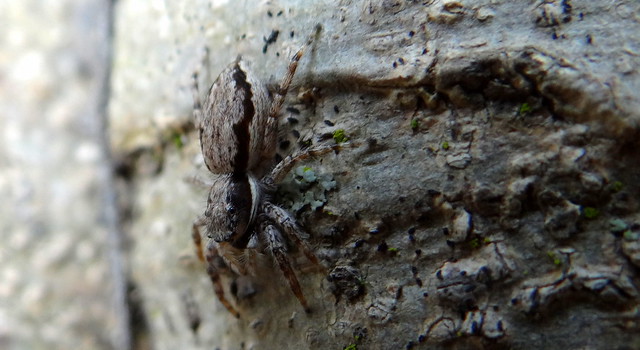
I did try to catch some of it on my camera…but for the most part, I just watched, and enjoyed myself hugely.
What is the need to build a temple? The whole place, with all our fellow-citizens on this planet, seems to be a temple of Nature to me. I go there, I feel peace in my heart and mind, and come away energized…to me, all of the beautiful wilderness is a temple, and God (I am an agnostic, I don’t know if there is a God or a Goddess..or not) seems to reside in every leaf, every feather, every piece of stone.
We also met several other birders there, and it’s nice to say hello to like-minded people even if one does not exchange names. Two boys from Valley School asked us, on our way out, what we’d seen…and I was happy to see these two youngsters on their way to absorb the various wonders that Nature has in store for them. A magical place, the Valley School area…long may it last!
I’ve put up my SMS (Shamelessly Mediocre Shots) on my FB album at
https://www.facebook.com/deemopahan/media_set?set=a.10152224313113878.1073742178.587058877&type=1
You can see the riotous colours of the summer blossoms, and the many tiny and large wonders that we experienced.
Garima has shared the bird list with me on E-bird. The list is at
http://ebird.org/ebird/view/checklist?subID=S18643924
I’m not sure if this is good enough, or I need to give another link? Let me know, O ye E-bird savvy birders!
Butterflies:
Blues, Various
Cerulean, Common
Cerulean, Dark
Coster, Tawny
Crimson-tip, White
Emigrant, Common
Gull,Common
Jezebel, Common
Orange-tip, White
Pioneer
Rose, Common
Rose. Crimson
Tiger, Blue
Tiger, Dark Blue
Tiger, Plain
Wanderer, Common
Yellow, Common Grass
Others
Ants, Bees, Beetles, Dragonflies, Grasshoppers, and Wasps.
One Rat Snake, scurrying away quickly from me. This Garden Lizard, basking in the sun.

If my words make you decide to go into the outdoors next weekend…I am really happy!
Ladybug:
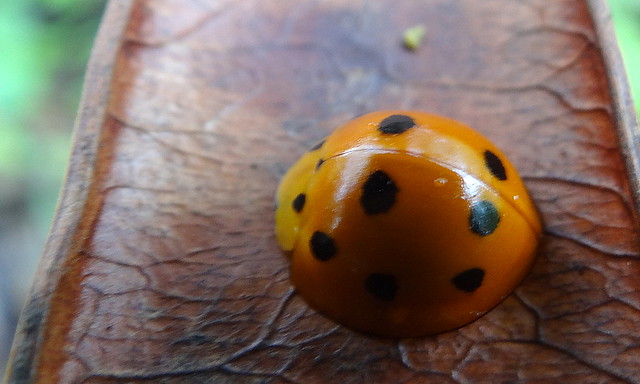
Riotous colours of summer:






































